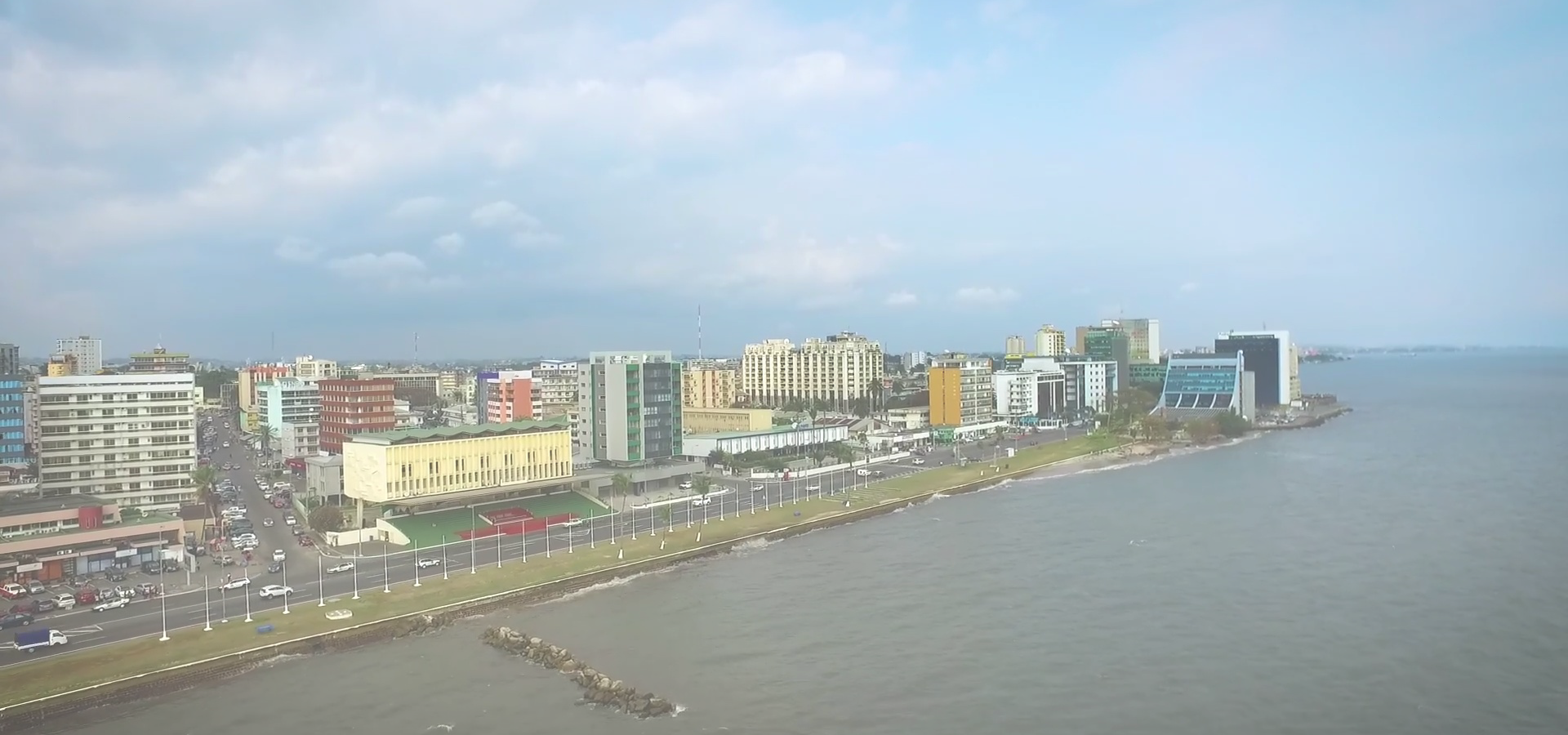Libreville, Estuaire Province, Gabon
🇬🇦 Libreville is the capital and largest city of Gabon. It is situated in the north-western province of Estuaire, Libreville is a port on the Komo River, near the Gulf of Guinea. The area was inhabited by the Mpongwe people before the French acquired the land in 1839.
The area has been inhabited by the Mpongwe people since before the French acquired the land in 1839. It was later an American Christian mission, and a slave resettlement site, before becoming the chief port of the colony of French Equatorial Africa. By the time of Gabonese independence in 1960, the city was a trading post and minor administrative centre. Since 1960, Libreville has grown rapidly and now is home to one-third of the national population.
From north to south, major districts of the city are the residential area Batterie IV, Quartier Louis (known for its nightlife), Mont-Bouët and Nombakélé (busy commercial areas), Glass (the first European settlement in Gabon), Oloumi (a major industrial area) and Lalala, a residential area. The city's port and train station on the Trans-Gabon Railway line to Franceville lie in Owendo, south of the main built-up area. Inland from these districts lie poorer residential areas. North-west of Equatorial Guinea is where the city stands, labeling the city as a part of north-west Gabon. In terms of the country's surrounding boundaries, north is Cameroon, east is Congo, and south-east is the Democratic Republic of the Congo. It also rides the shores of the South Atlantic Ocean, which is on the country's west coast for reference. Additionally, in terms of aquatic geography, the Komo River passes through the city and empties into the ocean. The Komo River also stands as a potential hydroelectric source of power for the city which could generate supportive amounts of energy and power. Several city districts provide distinct and separate benefits throughout the city as well. In terms of nightlife, the Quartier Louis sector is most renowned. One of this zone's sides includes the coast, and this heavily influences the possible activities available in the area. Commercial areas within Libreville are housed in the Mont-Bouët and Nombakélé districts, which feature several shopping centres and stations selling purchasable goods. Oloumi contains much of the city's industry, integrating production separately from the districts that focus upon other aspects. Finally, Lalala and Batterie IV are residential and housing sectors, where much of the populace resides.
Transport Léon-Mba International Airport is the largest airport in Gabon and is located around 11 km (6.8 mi) north of the city. National Taxis operate around the city. Each district has a colour for its taxis and Libreville's is red. The National Society of Transport (SOGATRA) launched new taxis that operate on a counter system in 2014. The Gabonese Transport Company operates a bus service to all districts of Libreville.
Economy The city is home to a shipbuilding industry, brewing industry, and sawmills. The city exports raw materials such as wood, rubber and cocoa from the city's main port, and the deep-water port at Owendo.
Gabon Airlines has its headquarters in Libreville. Prior to their dissolutions, both Air Gabon and Gabon Express were headquartered on the grounds of Libreville International Airport. The French Army's 6th Marine Infantry Battalion is based in the north of the city.
Culture • Arboretum de Sibang.
Education The Omar Bongo University was founded in 1970. There are several high-end international schools in Libreville, including: • American International School of Libreville – American curriculum • Lycée Blaise Pascal de Libreville – French curriculum • International School of Gabon Ruban Vert – IB curriculum.
Libreville, Estuaire Province, Gabon

Libreville is rated Sufficiency by the Globalization and World Cities Research Network (GaWC) which evaluates and ranks the relationships between world cities in the context of globalisation. Sufficiency level cities are cities that have a sufficient degree of services so as not to be overly dependent on world cities.
Libreville is rated E+ by the Global Urban Competitiveness Report (GUCR) which evaluates and ranks world cities in the context of economic competitiveness. E+ cities are strong regional gateway cities. Libreville was ranked #1339 by the Nomad List which evaluates and ranks remote work hubs by cost, internet, fun and safety. Libreville has a population of over 703,940 people. Libreville also forms the centre of the wider Libreville metropolitan area which has a population of over 1,083,906 people.
To set up a UBI Lab for Libreville see: https://www.ubilabnetwork.org Twitter: https://twitter.com/UBILabNetwork
Twin Towns - Sister Cities Libreville has links with:
🇫🇷 Nice, France 🇸🇹 São Tomé, São Tomé and Príncipe 🇨🇳 Shantou, China🇺🇬 Wakiso Town 0.418
🇺🇬 Bweyogerere 0.35
🇺🇬 Mukono Town 0.35
🇩🇪 Friedrichshafen 9.483
🇩🇪 Bodenwerder 9.517
Locations Near: Libreville 9.44748,0.388743
🇬🇦 Port-Gentil 8.791,-0.728 d: 144.1
🇬🇶 Ciudad de la Paz 10.817,1.583 d: 202
🇸🇹 São Tomé 6.731,0.345 d: 302.1
Antipodal to: Libreville -170.553,-0.389
🇼🇸 Apia -171.76,-13.833 d: 18514.3
🇦🇸 Pago Pago -170.701,-14.279 d: 18470.4
🇹🇴 Nuku'alofa -175.216,-21.136 d: 17653.2
🇺🇸 Līhuʻe -159.35,21.967 d: 17248.3
🇺🇸 Lihue -159.35,21.967 d: 17248.3
🇺🇸 Kapa'a -159.333,22.083 d: 17236
🇺🇸 Honolulu -157.85,21.3 d: 17236.6
🇺🇸 Pearl City -157.969,21.394 d: 17234.1